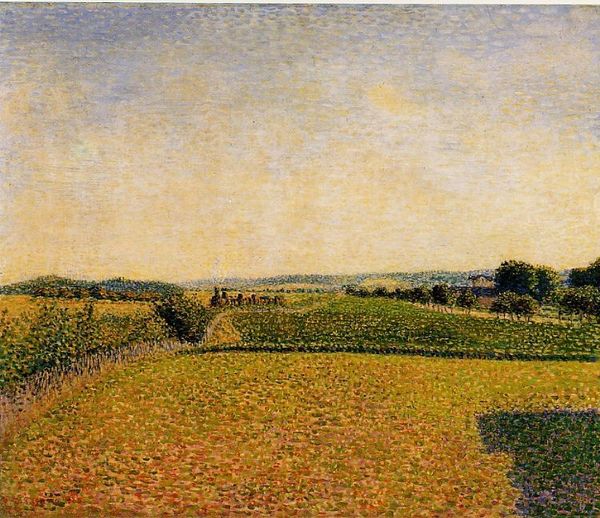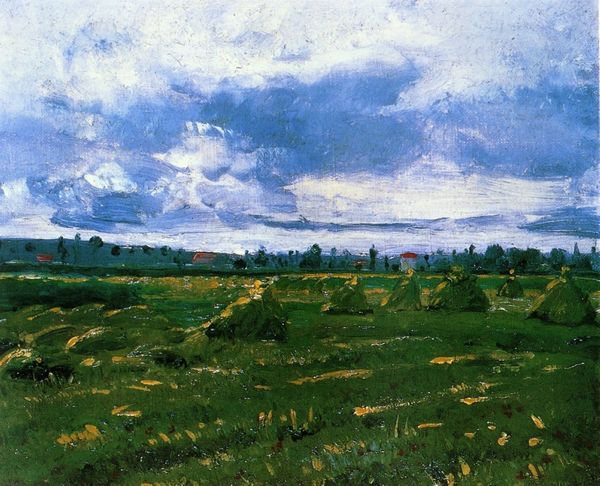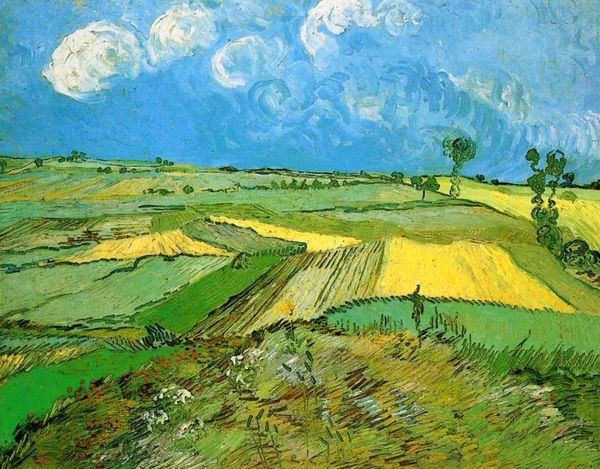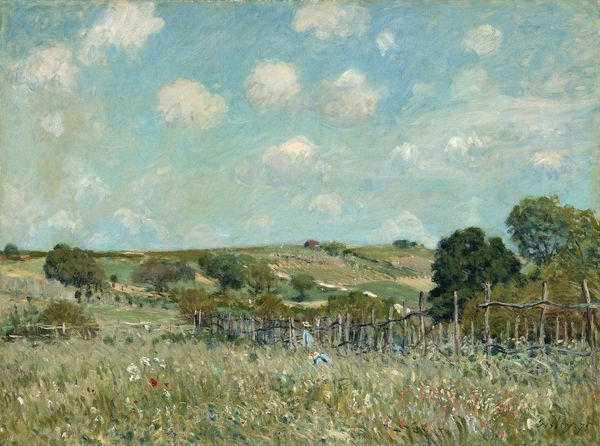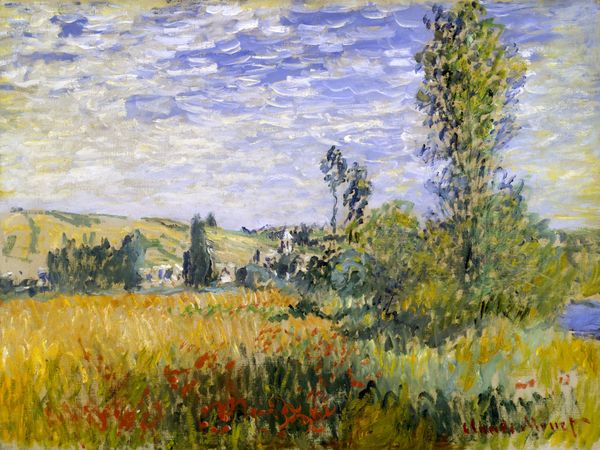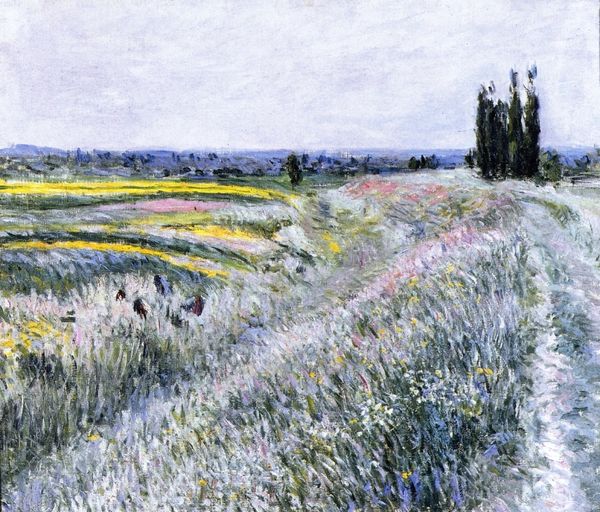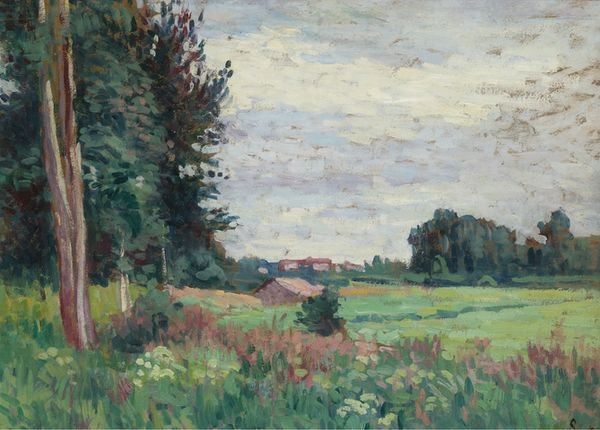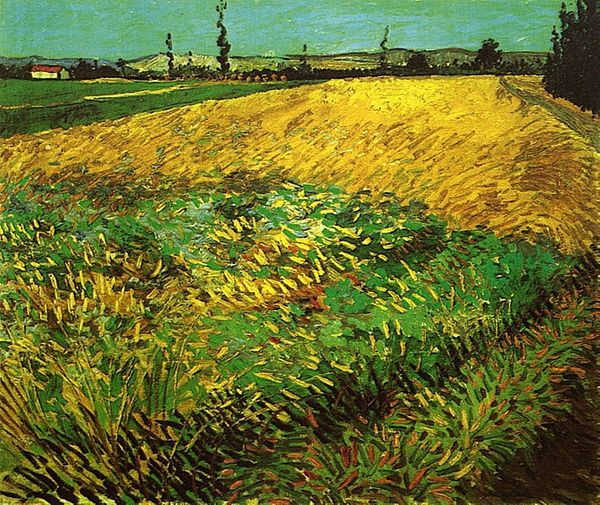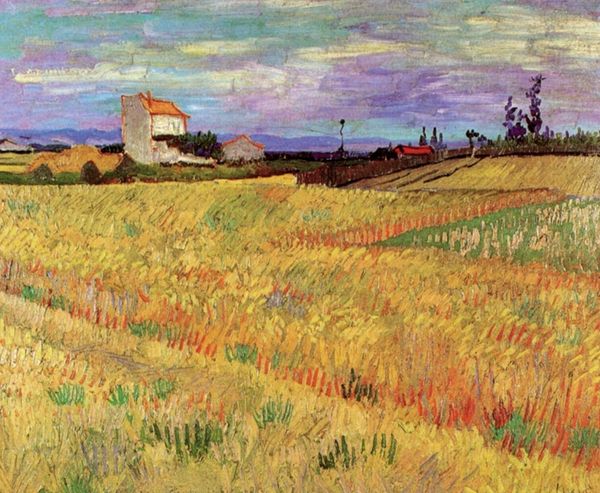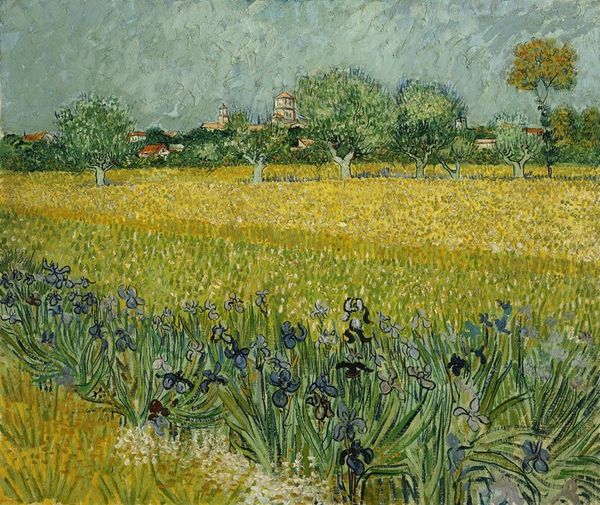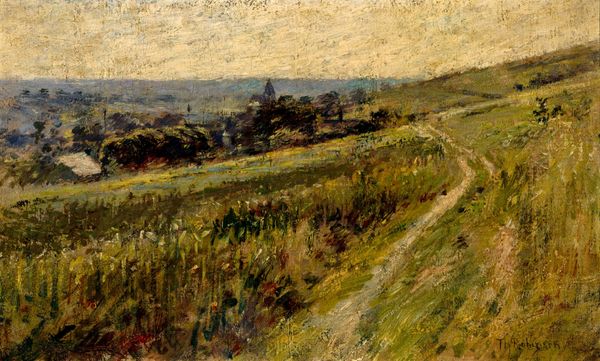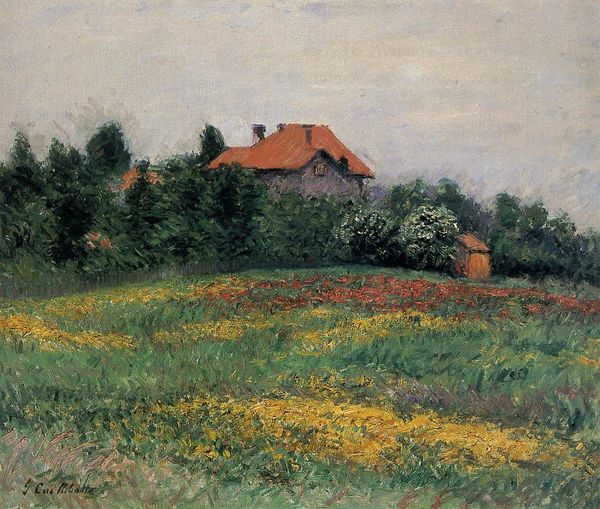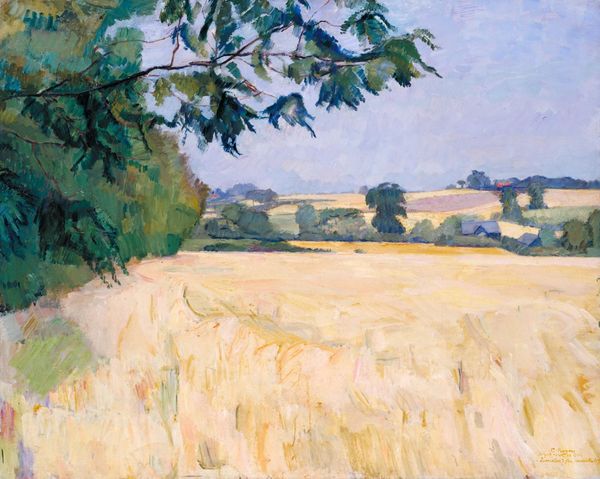
Dimensions: 50.5 x 73 cm
Copyright: Public domain
Editor: So, this is Alfred Sisley's "Cornfield," painted in 1873, oil on canvas. It strikes me as incredibly tranquil, almost dreamlike. What do you see in this piece beyond just a pleasant landscape? Curator: I see more than just tranquility. Consider the context: France in the 1870s. The echoes of the Franco-Prussian War were still resonating throughout society. Looking at this idyllic cornfield, do you think it might also represent a yearning for stability, for a return to normalcy after immense social upheaval and political instability? How might this image challenge or reinforce existing power structures? Editor: That's a perspective I hadn’t considered. I was focusing on the pure aesthetics of the Impressionist style. So, are you saying that the painting could be interpreted as a quiet act of resistance, perhaps a subtle commentary on the desire for peace and restoration of France's identity through the cultivation of its land and traditions after such political upset? Curator: Precisely! The Impressionists were, in their way, radical. They challenged the artistic establishment by depicting everyday life and focusing on subjective experience. Sisley, while often less overtly political than some of his contemporaries, subtly engaged with questions of labor and nation. Look at the corn itself – a staple. What does food production signify? Who has access? Who benefits? Considering these elements, we begin to see beyond a simple landscape and recognize an image intertwined with social and political significance. The figure in the background suggests labour. What were conditions like for labourers at the time? Editor: That is really compelling. I was initially drawn to its aesthetic appeal, but seeing it as a reflection of its historical context provides it with deeper meaning and speaks to social inequalities of the period. Curator: Indeed. Art often functions as a mirror and a magnifying glass. It reflects its time, but it also amplifies certain narratives, silences others, and shapes our understanding of the past and, by extension, the present. Editor: This conversation completely transformed how I perceive this landscape, from mere prettiness to a potent historical statement. Curator: That’s the power of art, isn't it? To challenge our perceptions and encourage dialogue across time.
Comments
No comments
Be the first to comment and join the conversation on the ultimate creative platform.

